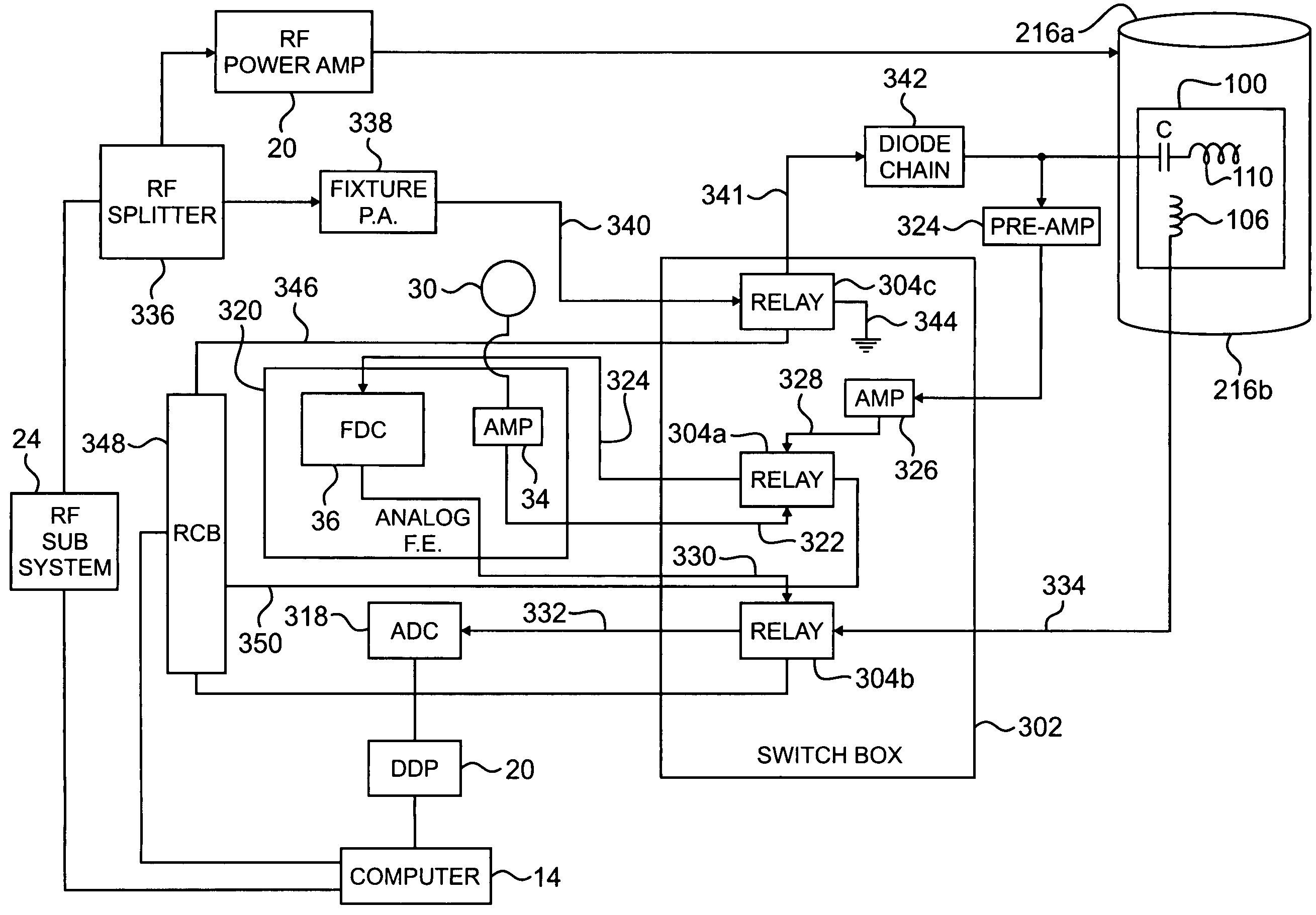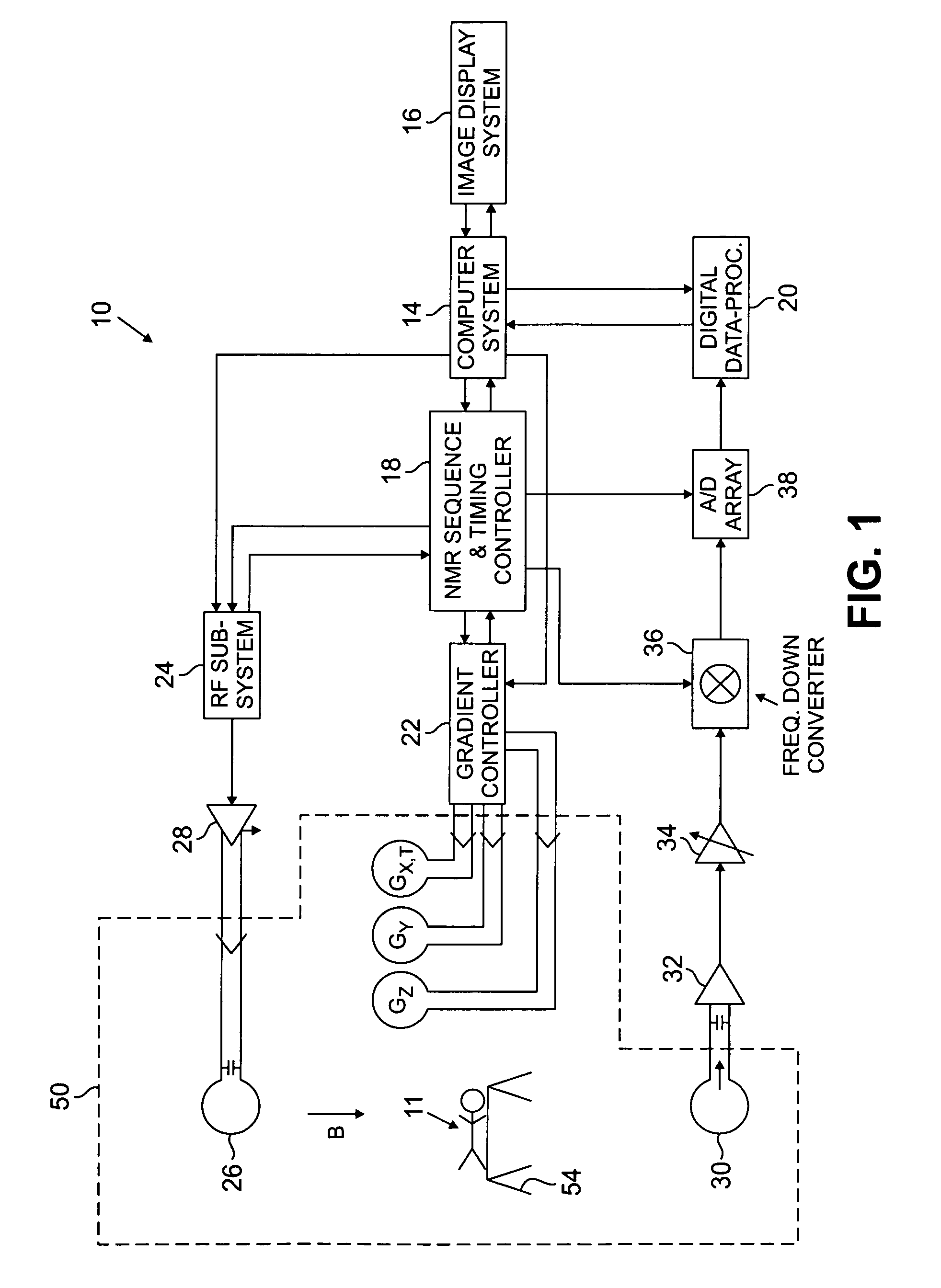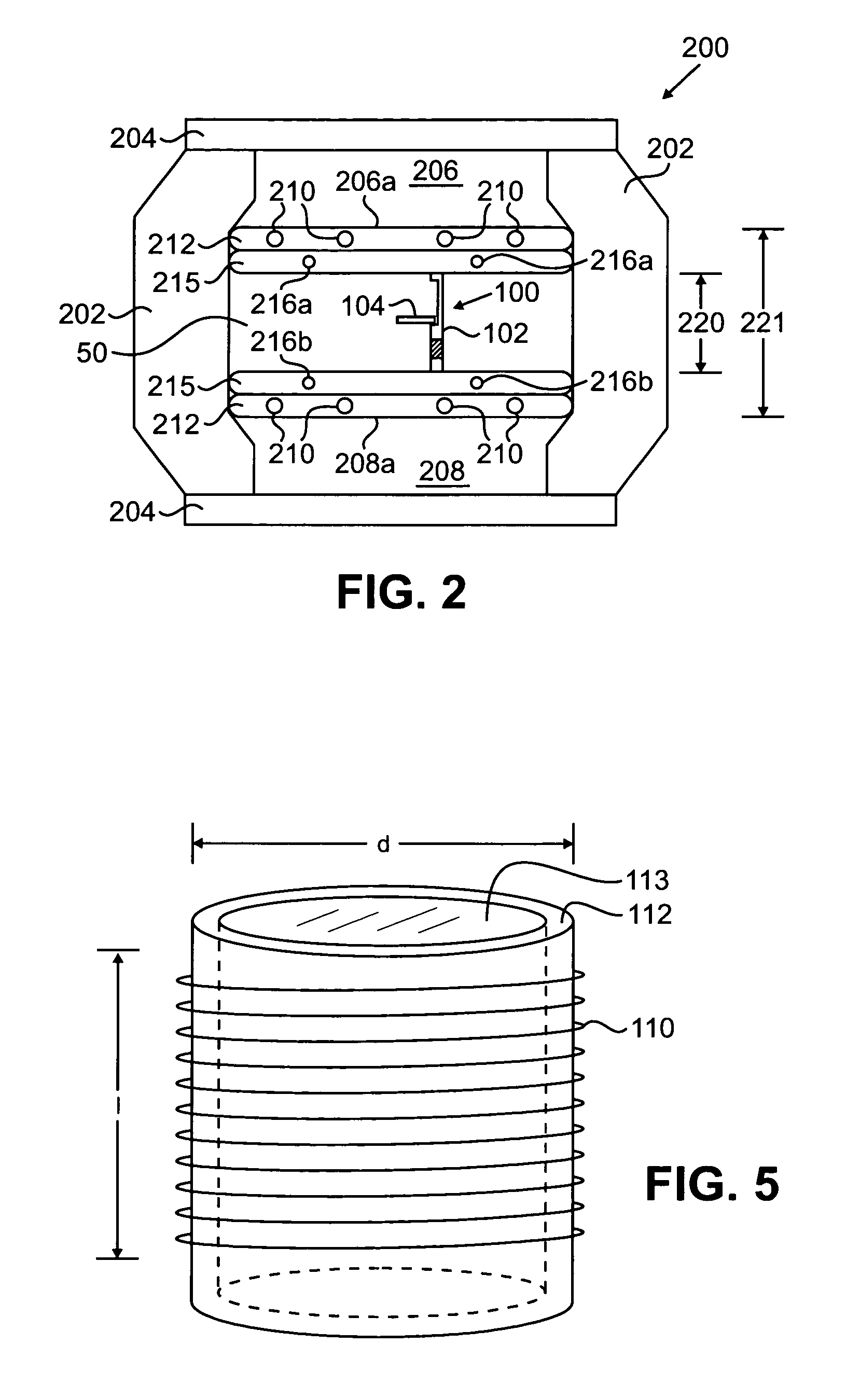MRI test fixture
a test fixture and mirror technology, applied in the direction of magnetic measurement, instruments, measurement devices, etc., can solve the problems of destroying imaging data, ghosting, blurring and other artifacts in the resultant image, and affecting the accuracy of the results
- Summary
- Abstract
- Description
- Claims
- Application Information
AI Technical Summary
Benefits of technology
Problems solved by technology
Method used
Image
Examples
Embodiment Construction
[0029]FIG. 2 is a side view of one embodiment of a test fixture 100 deployed in the imaging volume 220 between the poles of a magnet assembly of an Open Magnetic Resonance Imaging (“MRI”) System 200, in accordance with the present invention. In a preferred embodiment, the test fixture 100 comprises a vertically extending main body portion 102 and an arm 104.
[0030]In one embodiment, the Open MRI System 200 comprises a magnet assembly comprising a ferromagnetic frame supporting ferromagnetic poles. The ferromagnetic frame may comprise ferromagnetic elements 202 connected at their ends to opposing ferromagnetic pole supports 204. The ferromagnetic pole supports are plates that support upper and lower ferromagnetic poles 206, 208. The supporting elements may be ferromagnetic plates, as described in U.S. Pat. No. 6,201,394 B1, assigned to the assignee of the present invention and incorporated by reference herein, for example, or four ferromagnetic posts connected to the corners of the po...
PUM
 Login to View More
Login to View More Abstract
Description
Claims
Application Information
 Login to View More
Login to View More - R&D
- Intellectual Property
- Life Sciences
- Materials
- Tech Scout
- Unparalleled Data Quality
- Higher Quality Content
- 60% Fewer Hallucinations
Browse by: Latest US Patents, China's latest patents, Technical Efficacy Thesaurus, Application Domain, Technology Topic, Popular Technical Reports.
© 2025 PatSnap. All rights reserved.Legal|Privacy policy|Modern Slavery Act Transparency Statement|Sitemap|About US| Contact US: help@patsnap.com



